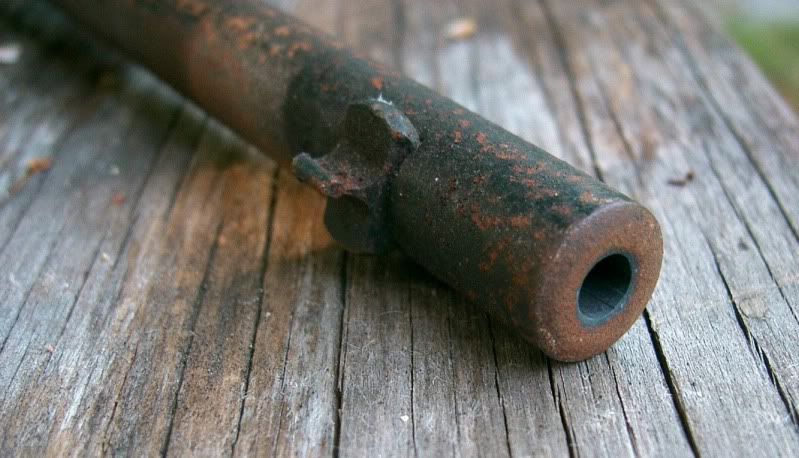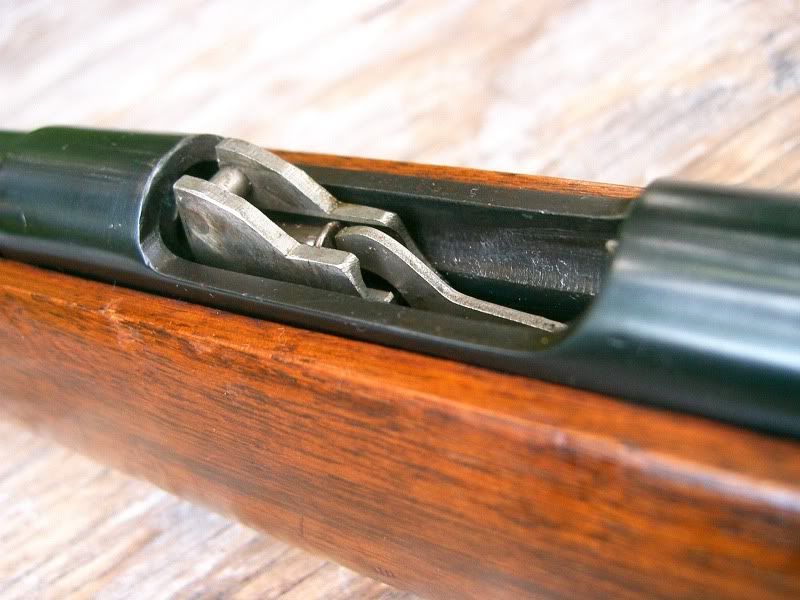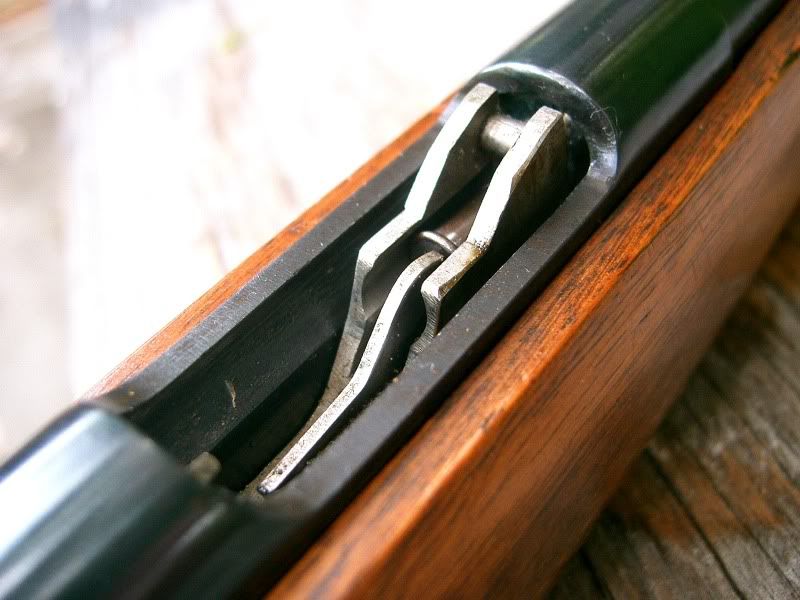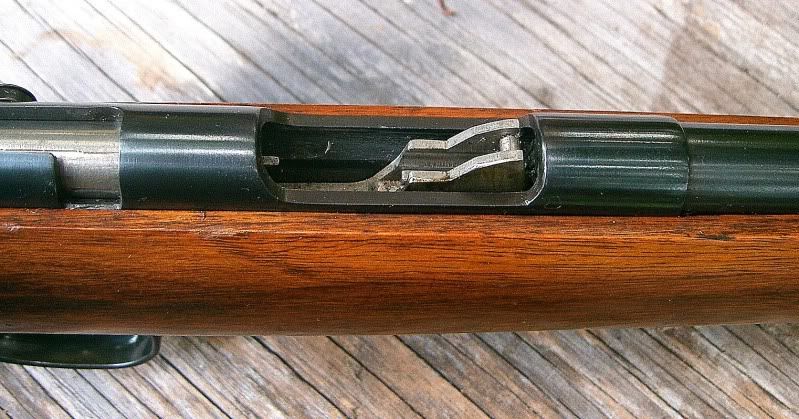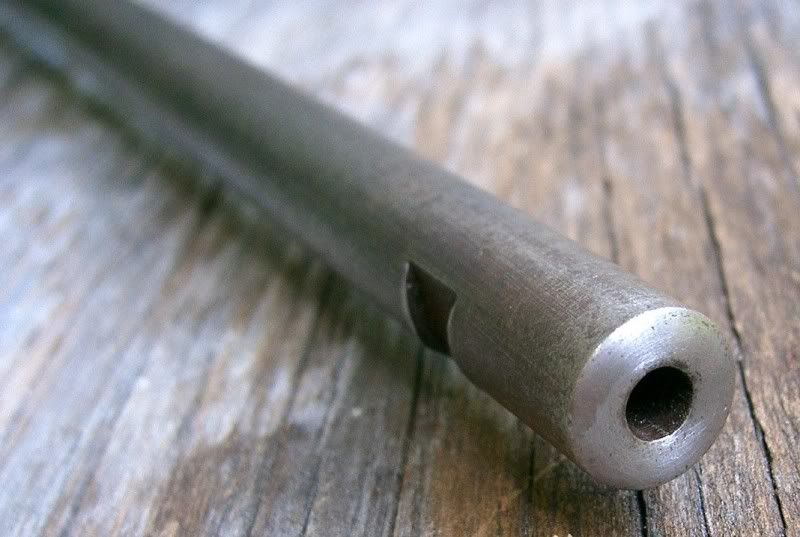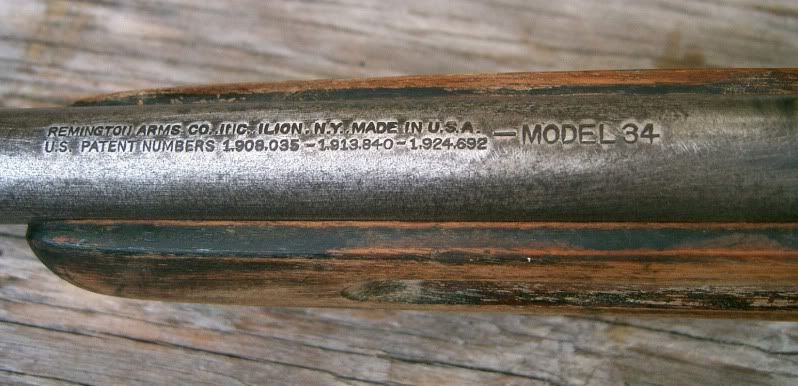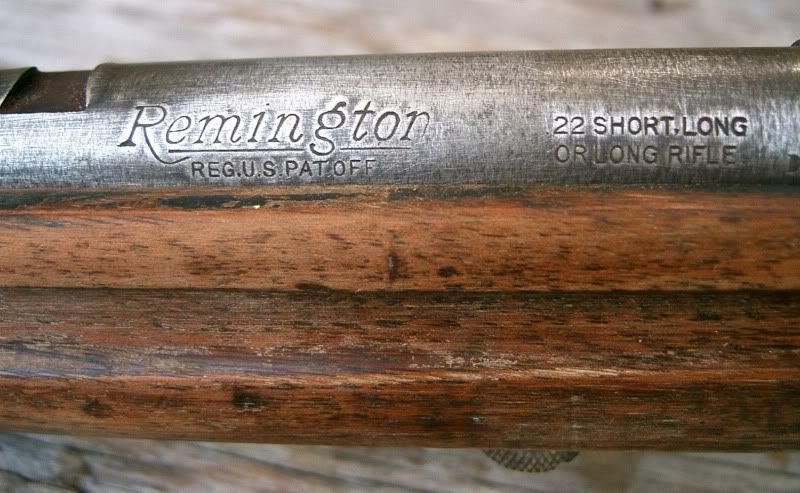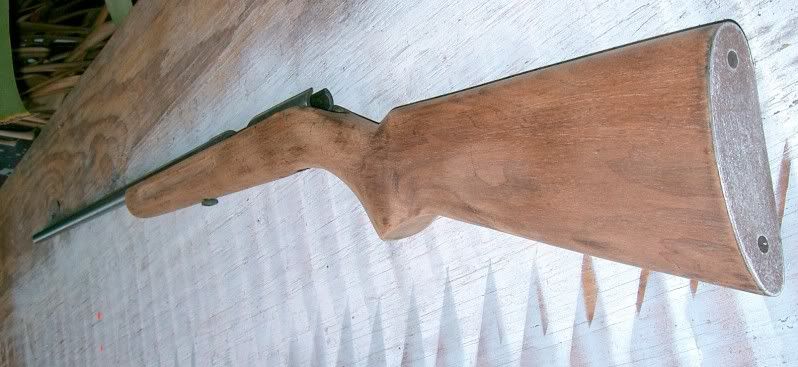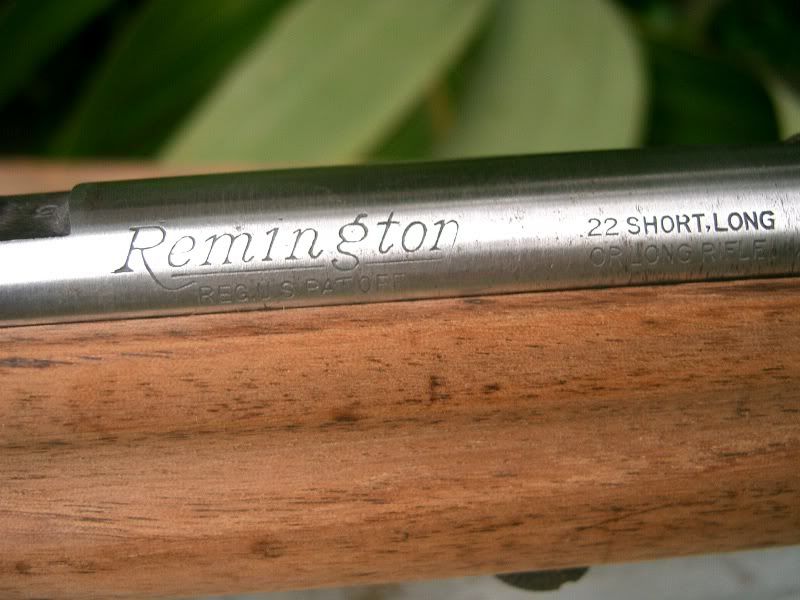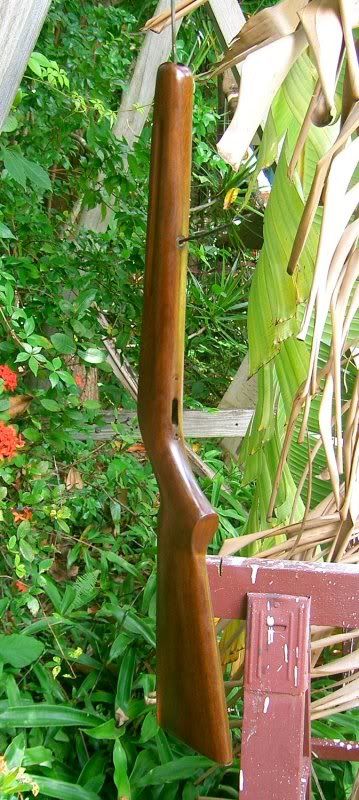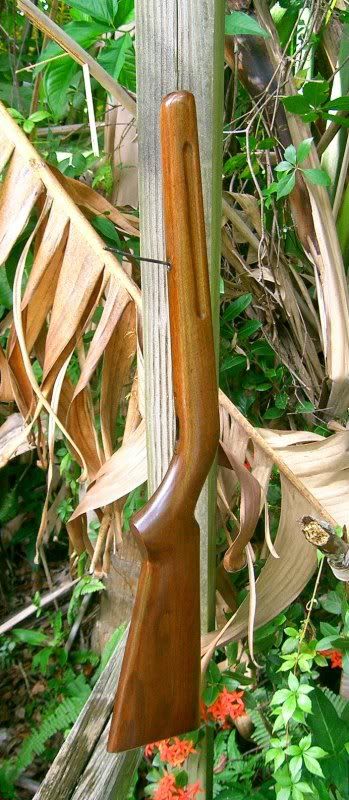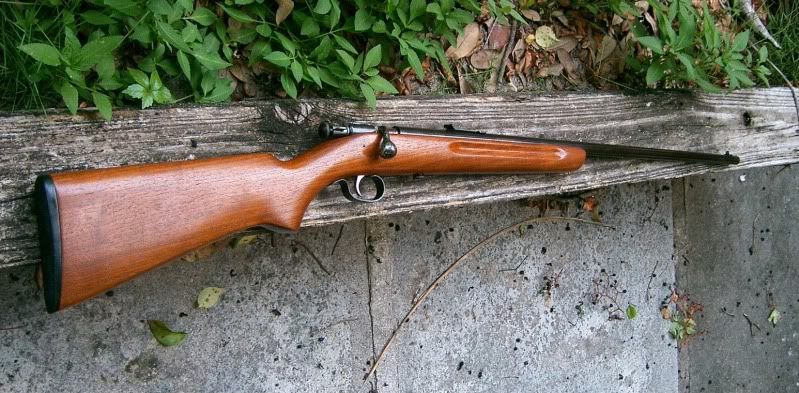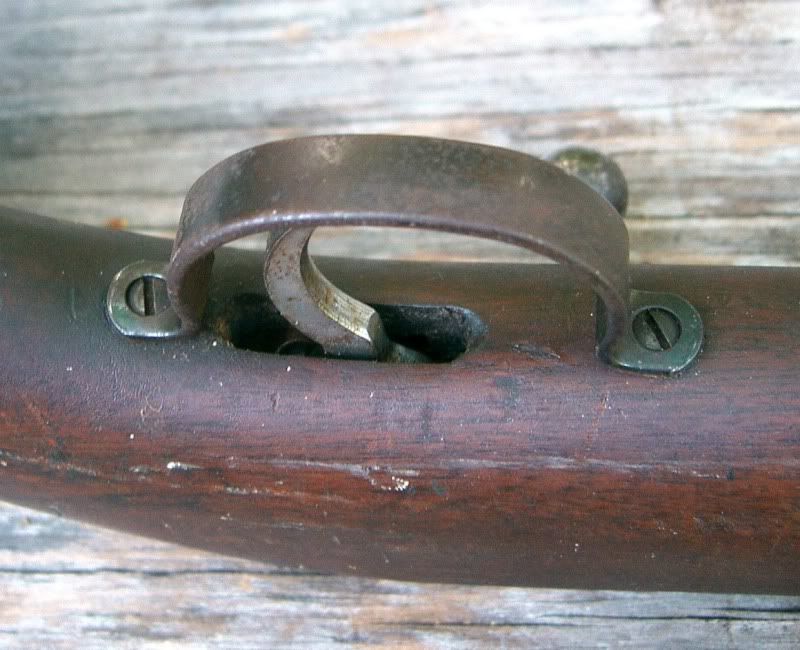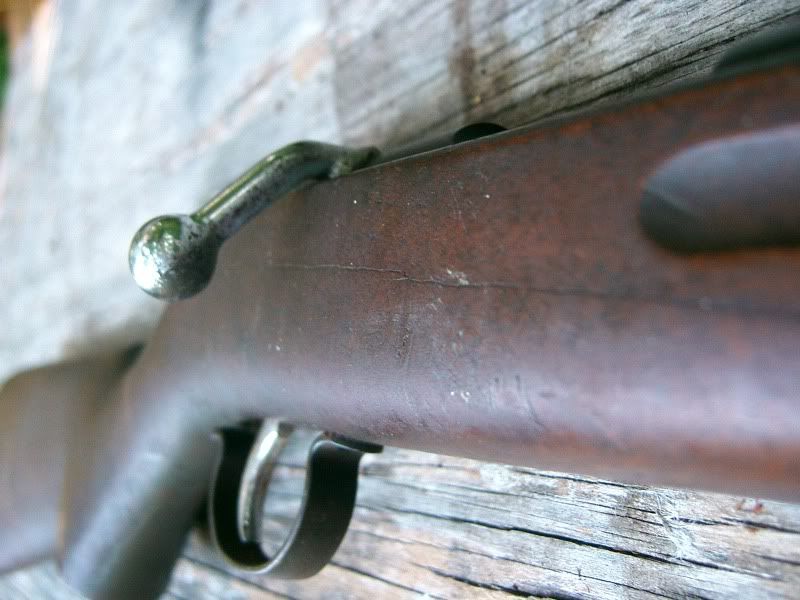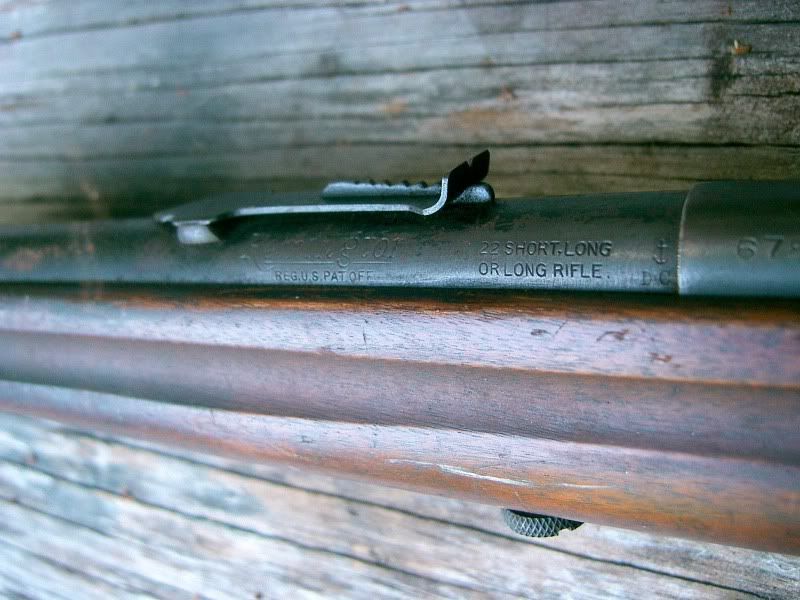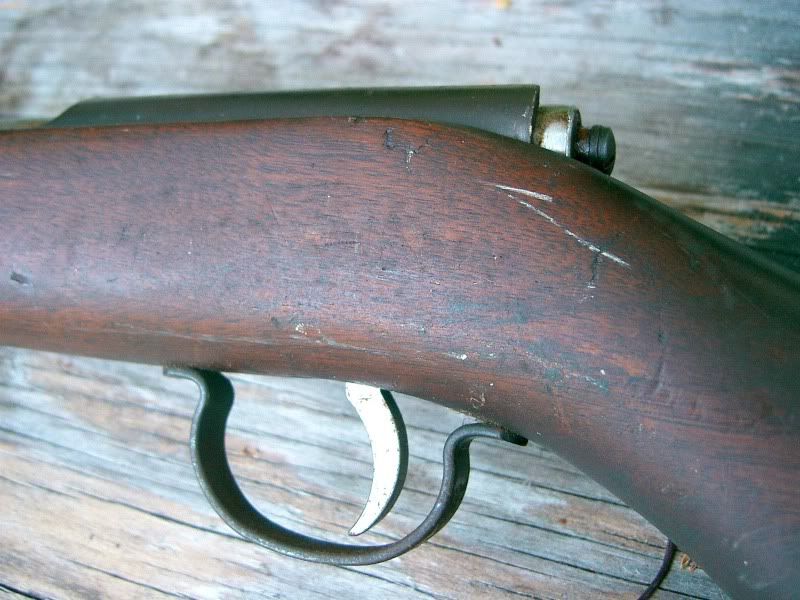August 5, 2009. This project grew and grew, probably the most in-depth how-to I've ever done. If you guys are looking for one way to revive and enhance an old worn-out and seemingly hopeless gun, this thread will show you how. The only prerequisite to investing the time and emotional interest in such a piece is that it be mechanically sound on the inside, no matter how it looks on the outside. Pay particular attention to the most neglected inspection rarely done--check the barrel for rings and bulges before you commit!
~~~~~~~~~~~~~~~~~~~~~~~~~~~~~~~~~~~~~~~~~~~~~~~~~~~~~~~~~~~~~~~~~~~~~~~~~~~~~~~~~~~~~~~~~~~~~~~~~~~~~~~~~~~~~~~~~~~~~~~~~~~~~~
This gun has just found its way into my pending basket and has it all--mechanical soundness, great lines, cracked stock, perfect bore, and a built up equity of neglect. Most seasoned guys in the crowd will take one look at this erstwhile 22 and think, correctly, "hmmm, damp dark closet queen for the last 15 years". That's about where I figure it lived, minus any oil, for at least that amount of time. I consider such a rifle to have a little too much character and will slowly rebuild it from scratch using my self-taught methods. I took it out yesterday and after removing the spiders and dust from the barrel so I could see if it still had any rifling, found that it shoots like a dream-- smooth action, love that cartridge feeding system, and nice trigger. Just butt ugly at the moment. That will change over time, I intend on doing this at my leisure, and will report as I go along with illustrations.
![Image]()
![Image]()
![Image]()
![Image]()
DUDE. Throw this one away already, it's too late!!!
![Image]()
~~~~~~~~~~~~~~~~~~~~~~~~~~~~~~~~~~~~~~~~~~~~~~~~~~~~~~~~~~~~~~~~~~~~~~~~~~~~~~~~~~~~~~~~~~~~~~~~~~~~~~~~~~~~~~~~~~~~~~~~~~~~~~
This gun has just found its way into my pending basket and has it all--mechanical soundness, great lines, cracked stock, perfect bore, and a built up equity of neglect. Most seasoned guys in the crowd will take one look at this erstwhile 22 and think, correctly, "hmmm, damp dark closet queen for the last 15 years". That's about where I figure it lived, minus any oil, for at least that amount of time. I consider such a rifle to have a little too much character and will slowly rebuild it from scratch using my self-taught methods. I took it out yesterday and after removing the spiders and dust from the barrel so I could see if it still had any rifling, found that it shoots like a dream-- smooth action, love that cartridge feeding system, and nice trigger. Just butt ugly at the moment. That will change over time, I intend on doing this at my leisure, and will report as I go along with illustrations.
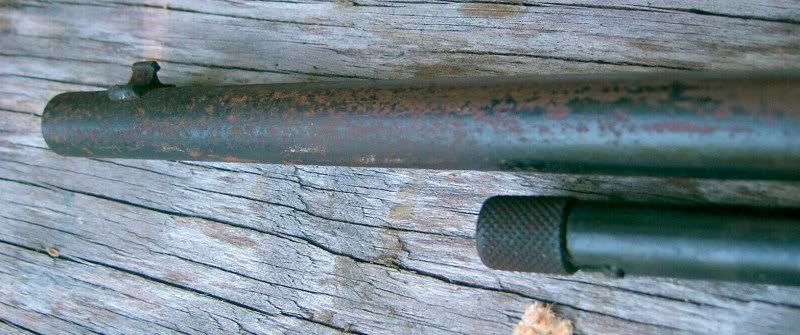

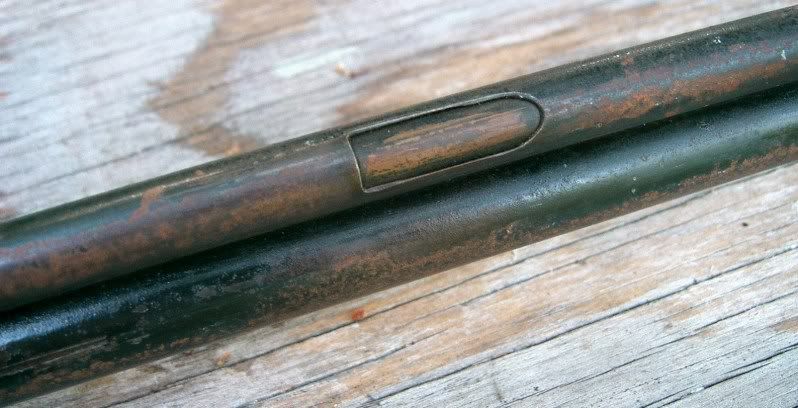
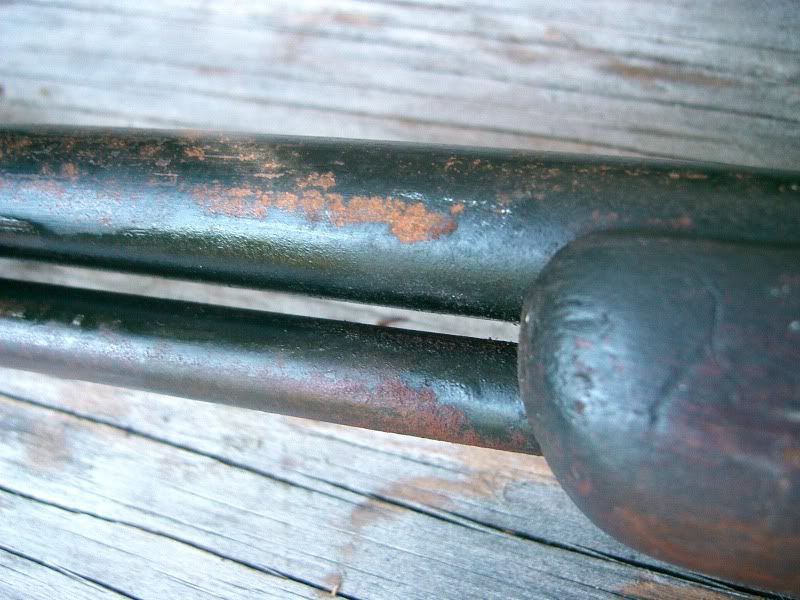
DUDE. Throw this one away already, it's too late!!!
